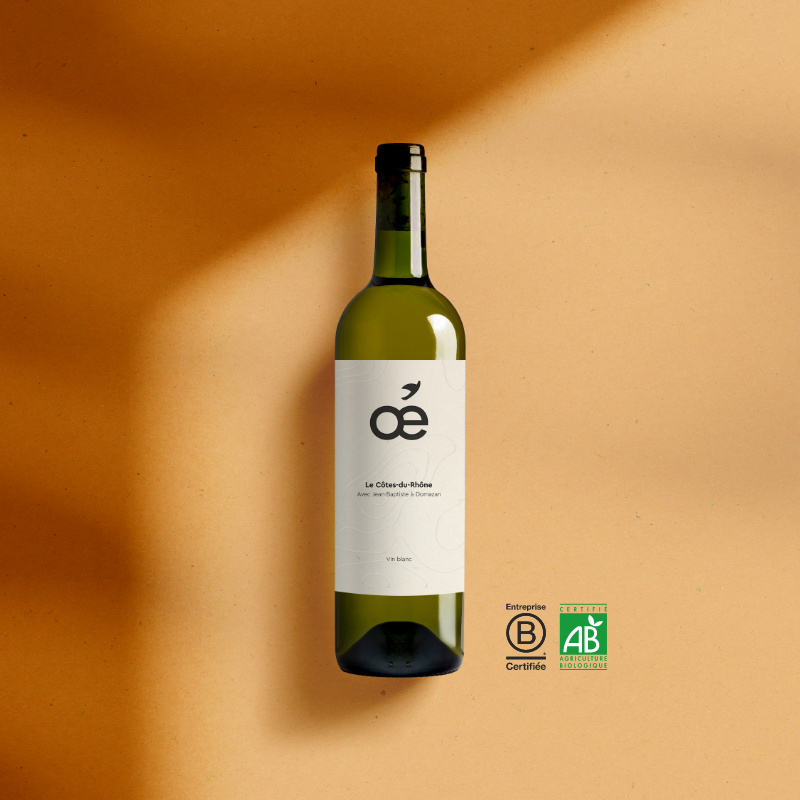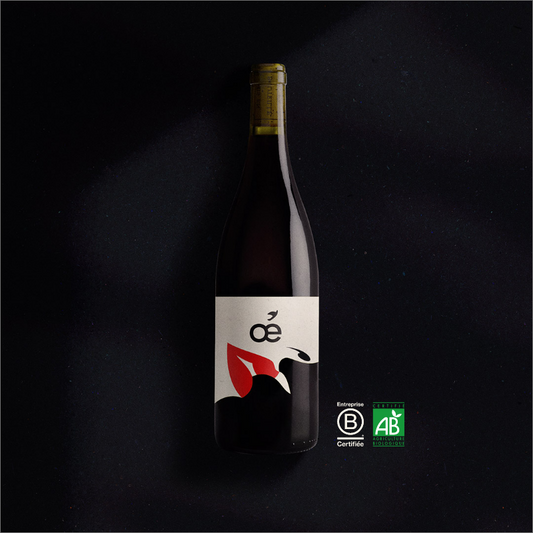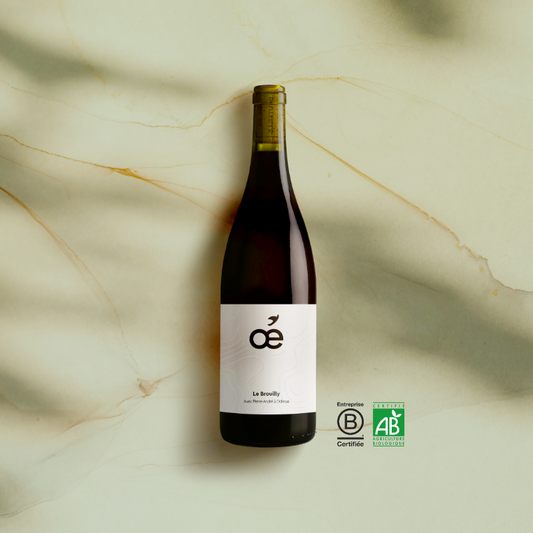On your marks, get set, enjoy! The barbecue season has finally begun, moments with family and friends around a good meal outdoors are back. It's time to make a beauty of our gardens, our terraces, our interiors to welcome all this little world. But above all, fill up on good drinks to accompany it all. Let's go !
Wine (organic): a tradition
We have all already noticed on our tables during family meals on Sunday noon, one, two, three or even several bottles of wine always find their place. Without counting on Grandpa who serves up the somewhat grumpy son-in-law who, under the influence of alcohol, becomes a joker. In vino veritas as they say so well!
France is the second largest consumer of wine in the world behind the United States and ahead of Italy, i.e. more than 3.5 billion bottles in 2019.
Wine is a bit like cheese or baguette, it is part of our identity. Traditionally, that's how foreigners identify us, with bread, a beret, a marinière and above all a bottle in hand. In short, we really are bon vivants !
Wine is part of our lives in festive moments, dinners, evenings and solitary moments. It can be enjoyed on all occasions - especially on team evenings ;)

The will of the winegrowers to always produce a better quality wine, pushed them to improve their ways of cultivating the vines. Today it all goes organic . Organic viticulture has various advantages. For us, it's being able to taste wine without any pesticides or artificial fertilizers , it's better for the health of the planet, that of the winegrower and ours! For winegrowers, organic viticulture allows them to work in better conditions and to have the satisfaction of working with their land rather than from it. All this thanks to respect for nature and the reduction of the use of chemical products. It's better for the soil and the biodiversity of their vineyard.
Organic wine: a history of geography?
Yes in part...
France is a country ideally located geographically , surrounded by the Atlantic and the Mediterranean, this situation offers a unique setting in the world for viticulture. Obviously, location is not everything. It is also and above all thanks to the women and men who work there that the French vines are so recognized worldwide - If that's not class!
France is made up of 18 regions. Regions with their history, customs and typical cuisines. Moreover, regional wines are traditionally associated with the authentic dish found there. We will explain everything to you !

To begin with, there is a clear difference between the North and the South of France with regard to the traditions and the typology of wines produced. The more you go towards the North of the country, the more the wine is “acid”. And yes, in the north there is less sun, so the vines are less exposed. Conversely, the further south you go, the more sun there is and the less acid the wines are because the grapes are full of sugar at harvest. Obviously, the traditional grape varieties of each region are adapted to the local sunshine.
...but not only !
Remember also that it is more ecological to taste wine from our regions than wine from the other side of France (or the world). The wine stays in a short circuit, and that's great because it limits its carbon footprint .
Wine is an art - the 8th if you ask us. Like a work, you have to know how to link the elements together and play on the contrasts between aromas, textures and colors. In a wine as in a dish, there are different elements that come together, even in the simplest dishes. You just have to match the textures, flavors and aromas (fat/fat, sugar/sugar, dry/dry, aroma/aroma). Linking the colors together is beautiful but can also prove to be a good taste strategy. For example, with a grilled salmon steak, you can pair it with rosé, such as the Méditerranée or the Corbières . You can also mix the flavors: sweet/salty, light/powerful, etc… ultimately it depends on everyone’s tastes. The most important thing is to find a balance . There is no absolute truth. We must drink the wine we love, the one that gives us pleasure and reminds us of good times .
The emotion of wine tasting
Whether you drink a wine bought at the supermarket in a mustard glass, a rosé by the pool or a grand cru in a crystal glass, the important thing is the emotion . There is no hierarchy in this area. But it is true that a wine is not savored in the same way whether it is tasted alone or with others.
Valérie, our oenologist, says that each wine should simply be tasted in the right conditions . For example, we French people have a more romantic relationship with him. We talk about wine as if it were a friend, because tasting wine is a moment of sharing and conviviality . He is a longtime friend of the family with whom we always enjoy meeting despite the weather, but whom we love in moderation;)
Place for tasting

Franck, the winemaker behind the red Bordeaux Oé teaches us how to taste!
First of all, to taste well, the first thing is to make sure that the wine is at the right temperature . A wine that is “too cold” loses its aromas and a wine that is “too hot” is not pleasant to taste.
- 1st step : observe the color, or the dress for the more technical term. Through it, we will know more about its age, its acidity and the grape variety of the wine.
- 2nd step : use our sense of smell. Smell the wine as it is at first. Then swirl the wine in the glass to allow the aromatic molecules to disperse. We can now put our sense of smell back to work and feel the differences between our two inspirations
- 3rd step : the appetizer, we solicit the puck. The attack is the first impression we have of the wine when we take it in the mouth, quite simply. Then, the mid-palate is the part where we analyze the texture of the wine and its flavors (acidity, bitterness, etc.). The finale is the last part of the tasting. It is the one that allows to analyze the duration during which the aromas of the wine remain in the mouth. So conquered?
And most importantly for the end, ask yourself: “Does wine have me more?” This is what will allow you to know if this wine is made for you!
Daily organic food and wine pairings
For the most gourmet among you, we offer you some good recipes with which you can uncork an Oé bottle...
The entrees
- Tomato brushettas, mozzarella & Parma ham → Rosé Corbières and Rosé Méditerranée
- Eggplant caviar → Côte du Rhône red
- Puff pastry of dried tomato mozzarella → Côte du Rhône red
- Homemade hummus → the Mediterranean rosé and the white Lanquedoc
- Hummus with tulip petals x Fleurivore → White Côte du Rhône
- Burrata, white beans, oyster mushrooms and puffed black rice x La Belle Assiette → Saint Emilion Grand Cru
The dishes
- Homemade spring rolls → White Bordeaux, white Côte du Rhône, Bugey, Lanquedoc
- Recipe for vegetarian bourguignon → Châteauneuf du Pape
- Green asparagus pies x C Our Onions → Rosé Corbières and Rosé Méditerranée
- Cream of asparagus x Baobab Lab → white Bugey and white Bordeaux
- Jerusalem artichoke mousseline x La Belle Assiette → white Côte du Rhône
- 3 idea of vegetarian recipes and seasons for end of years ( from least to most powerful)
- Appetizer squash verrine → the Crémant
- Cream of mushroom soup with ginger → White Côte du Rhône
- Pumpkin and smoked tofu risotto → Le Bugey blanc
- Tex Mex style buckwheat chilli x Baobab Lab → Le Vaucluse Principality of Orange
- Saffron risotto with scallops → White Bordeaux
- Grilled prawns, fennel and grapefruit → White Bordeaux and white Côte du Rhône
- Crumble with caramelized red onions and salad x Recipes and shopping bags → Le Bugey blanc and Le Vaucluse Principality of Orange
The desserts
- Chocolate fondant x Baobab Lab → Crémant or Châteauneuf du Pape or Saint-Emilion Grand Cru
- Candied apple jelly, caramel mousse with tonka bean x La Belle Assiette → the Crémant





